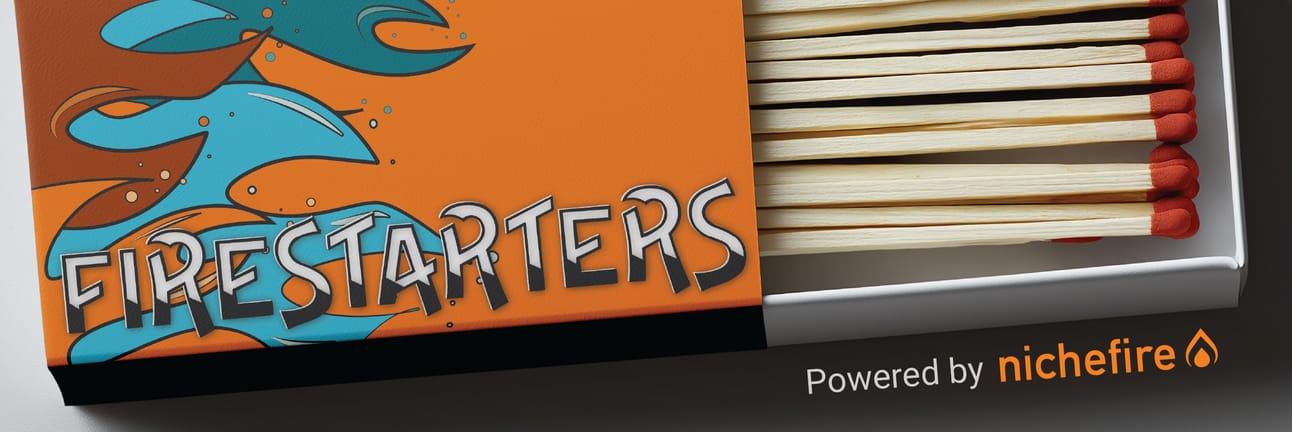- FireStarters - The Nichefire Newsletter
- Posts
- Nutrition-Per-Dollar: The New Value Paradigm
Nutrition-Per-Dollar: The New Value Paradigm
What happens when culture meets the checkout line.

f
The topic on our mind today is value — not in dollars and cents, but in nutrients and meaning.
Inflation has rewritten what “worth it” means for millions of households, shifting focus from price-per-unit to nutrition-per-dollar.
This edition unpacks Nutrition-Per-Dollar, how value has evolved, and the 3 micro-trends reshaping what “healthy” means in 2025.
These insights come from Nichefire’s partnership with Huckle, which blends predictive cultural intelligence with verified consumer data to reveal how value perceptions are evolving in real time.
The new value equation
The biggest thing to take away here is this: Today’s shopper doesn’t just ask, “How much does it cost?” — they ask, “What does it give me?”
According to Nichefire’s data, drawn from over 180,000 social and search conversations, consumers are optimizing their grocery carts like financial portfolios.
Protein yield, satiety, and versatility now matter as much as taste. Posts that combine cost and health outperform pure price discussions by +67%, showing that value is now nutritional ROI.
Nichefire’s AI-powered cultural intelligence platform reveals this shift isn’t a niche trend; it’s actually a reset to how consumers define everyday value.
Inside this edition
We’ll explore three cultural currents driving this new paradigm:
The Protein-Value Crunch — where families measure worth by grams per dollar
Plant-Powered on a Budget — how affordable plant-based eating is democratizing wellness
Food-as-Medicine for Seniors — why older consumers are rethinking health spending through affordability
Together, these trends reveal how food brands can lead a movement built on smarter nutrition and transparent value.
Email Was Only the Beginning
Four years in the making. One event that will change everything.
On November 13, beehiiv is redefining what it means to create online with their first-ever virtual Winter Release Event.
This isn’t just an update or a new feature. It’s a revolution in how content is built, shared, and owned. You don’t want to miss this.
Trend 1: The protein-value crunch
Consumers are comparing meals by cost per 20g of protein, turning social feeds into mini nutrition stock markets. Posts mentioning protein rose +42% quarter-over-quarter, with price-linked protein content performing 2× better than recipes.
This shift is most visible among family-focused “nutrition economists,” moms balancing budgets and macros. They reward brands that display protein-per-dollar clearly, especially across multi-meal SKUs.
The takeaway: Value-dense protein is the new premium. Add $-per-protein badges to packaging, emphasize meal-stretch math, and celebrate efficiency as empowerment.
#StretchABird
Consumers are reframing rotisserie chicken as the ultimate multi-meal budget protein, using social trends like #StretchABird to celebrate getting three or more meals from a single bird. They’re applying cost-per-meal logic and seeking brands that make this easier through recipe roadmaps and bundled meal ideas.

Trend 2: Plant-powered on a budget
Plant-based isn’t just something for your crunchy cousin anymore. This time it’s not about saving animals, it’s about saving budget.

Plant-based eating has gone mainstream and pragmatic. “Plant-based + cheap” conversations jumped +58%, and 72% of positive buzz centers on sub-$5 products.
Budget-conscious families now see beans, lentils, and tofu not as lifestyle choices but as everyday nutrition engines. The modern “household CFO,” women 40–50 with families — is leading this wave.
Winning brands are those that highlight “Plant-Powered < $5” on shelves and e-commerce filters. The new message: Good for your family. Good for your wallet.
Trend 3: Food-as-medicine for seniors

Forecasts suggest affordable nutrition for seniors will see +134% projected growth in the next 18 months.
A powerful but often overlooked group, older adults on fixed incomes, is driving the “food-as-medicine” movement.
Conversations around affordable functional foods (for joint, heart, and metabolic health) are projected to grow +134% over 18 months. Especially as healthcare costs rise, affordable functional foods are often seen as a cheaper and more long-term solutions to traditional medicine.
It’s worth bearing in mind that seniors are health-minded but demand simplicity and trust. They prefer familiar channels like catalogs, TV, and Facebook, and respond to plain-language benefits such as “supports heart health.”
Download the full report on Nutrition-per-dollar cultural signals with demographic insights from Huckle

This edition only scratches the surface of what Nichefire and Huckle uncovered. The full Nutrition-Per-Dollar: The New Value Paradigm report dives deeper into audience demographics, activation playbooks, and the portfolio moves shaping the next 18 months of value-driven innovation.
Okay, but let’s be honest, you shouldn’t need a weekly newsletter to decode culture

Every journey into culture with Nichefire begins with a simple search anyone can make.
We’re proud of this newsletter, but if the only cultural signals you ever take a look at are the ones you see weekly right here, you’re missing out.
Nichefire brings cultural foresight directly to your fingertips. Our AI platform turns 180,000+ daily conversations into real-time intelligence, surfacing emerging shifts before they hit the mainstream.
From protein-value crunches to plant-powered economies, Nichefire helps CPG and Pharma leaders see what’s next, faster, connecting culture to commerce with the clarity and confidence your teams need to innovate.

Thanks for tuning in to FireStarters. If this edition lit up your thinking, don’t stop here. Dive into past issues to catch up on the cultural shifts and innovation signals you may have missed — from emotional AI to the new age of purpose-driven branding.
And stay tuned: the next edition drops with a major announcement you won’t want to miss — one that will change how teams everywhere tap into culture to innovate faster.
See you next time.

